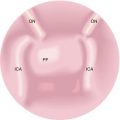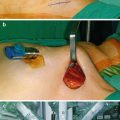John C. Watkinson and David M. Scott-Coombes (eds.)Tips and Tricks in Endocrine Surgery201410.1007/978-1-4471-2146-6_25
© Springer-Verlag London 2014
25. Managing the Airway in Thyroid Surgery
(1)
Department of Anaethestics, Queen Elizabeth Hospital, Birmingham, UK
Abstract
Despite expectations, management of the airway in thyroid surgery is rarely a problem.
Introduction
Despite expectations, management of the airway in thyroid surgery is rarely a problem.
When problems do occur, however, they can be at any stage of the operation.
Preoperative Assessment
It should be remembered that these patients are at risk of difficult intubation for the same reasons as those presenting for non-thyroid surgery and should be assessed as such. However, the presence of a compressive mass in the neck and mediastinum provides additional problems.
History
The history may indicate difficulty breathing, especially when lying down, suggestive of significant compression.
History of a sense of difficulty swallowing is not of diagnostic use regarding the airway. Choking when trying to swallow, however, may well indicate significant compression.
Other aspects of the history may indicate recurrent laryngeal nerve damage, particularly a change of voice. A past history of thyroid surgery, or other surgery in the neck, may be of significance, especially if resulting in change of voice. If the thyroid mass is malignant, there is a possibility of invasion of the nerve.
Examination
The apparent size of the goiter may be misleading as the mass normally extends posteriorly and inferiorly.
Stay updated, free articles. Join our Telegram channel

Full access? Get Clinical Tree





